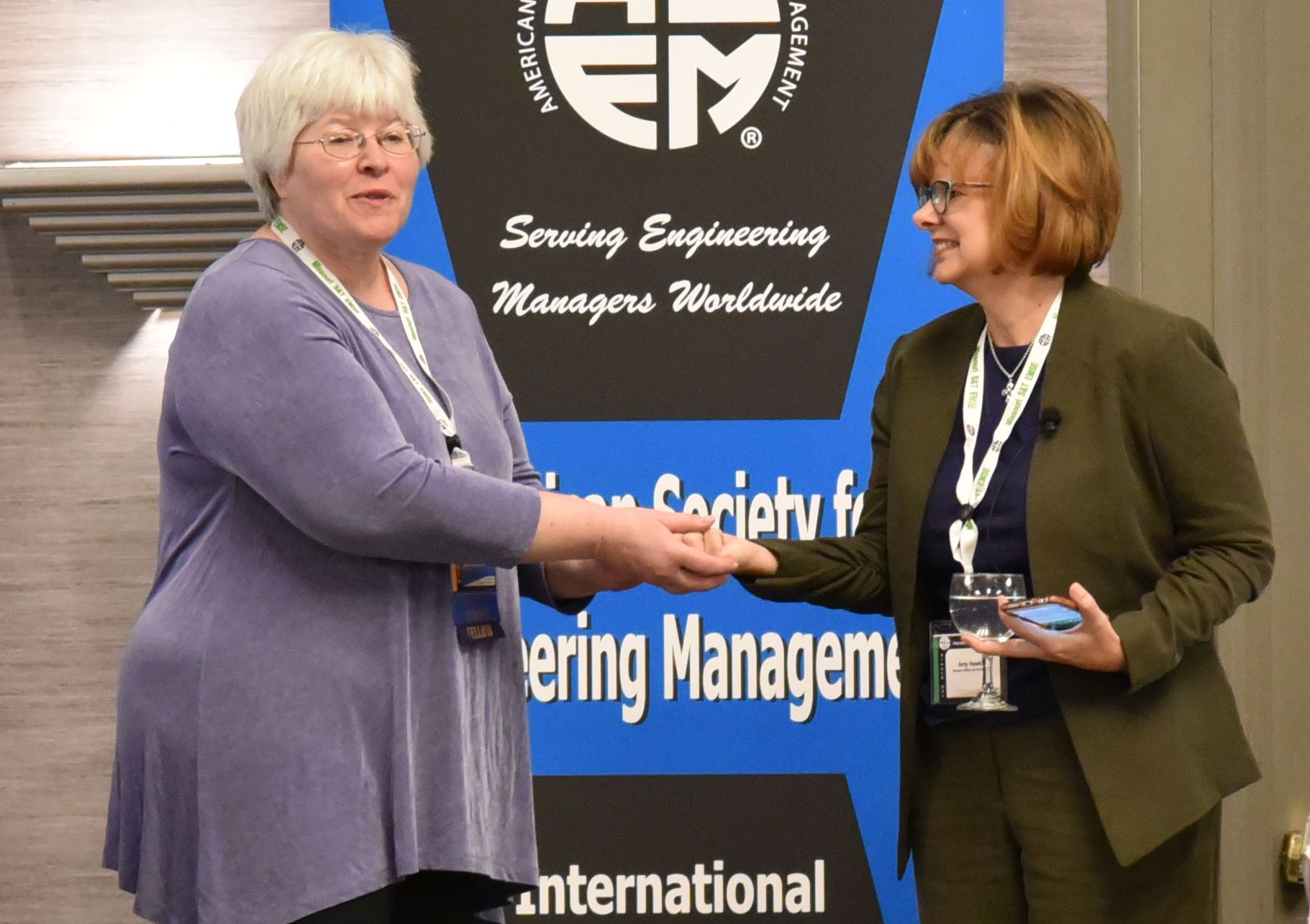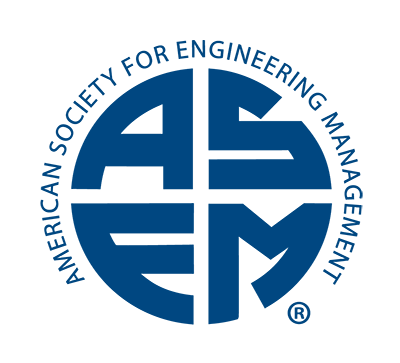By Teresa Jurgens-Kowal
 Q: Your presentation on user experience was fascinating and touches on the theme of design thinking which is becoming very important for engineered products and services to be successful in globally competitive markets. Engineers might be unfamiliar with how important customer experience is. You discussed a few soft skills in your presentation. What soft skills would you recommend that engineering managers learn in order to be successful with customer user experiences?
Q: Your presentation on user experience was fascinating and touches on the theme of design thinking which is becoming very important for engineered products and services to be successful in globally competitive markets. Engineers might be unfamiliar with how important customer experience is. You discussed a few soft skills in your presentation. What soft skills would you recommend that engineering managers learn in order to be successful with customer user experiences?
A: When I am hiring team members, I think about two characteristics – humility and confidence. Humility is important as a listening skill. Your customers and clients really know much more about what they do than you do. It takes humility to listen carefully and ask relevant, probing questions. You really must listen for an answer instead of just trying to formulate a response. And you need to have confidence how you implement the methodology of the user experience process – inquiry and data gathering. With the right approach and process, you will get good answers. Pointsource is a company that states this well: “We have no idea what you need yet. But together, we’ll figure it out.”
What I’m told is that empathy is a better word than humility to describe gathering of customer insights. But using your empathy still means you need to be a good listener to get a good answer. It’s very important to communicate well as an engineering manager. Ultimately, we have to understand qualitative information to design products with a desirable set of requirements.
Q: As you discuss communication, how would you advise a young engineer interested in this field to learn how to translate qualitative information into quantifiable specifications?
A: First of all, there is no one size fits all solution. As I explained in the presentation, it’s important to tell the story. That is, the customer’s journey and the story describes his or her challenges. Once we can tell the story, we break it into steps. Then we can translate the steps into tasks and we can create a model based on these tasks.
Customers often don’t have the tools or training themselves to dissect the story. In other cases, they are too close to the story to see it clearly. As systems engineers, we help them translate their needs into product requirements. We use a design thinking tool called a customer journey map to track a user’s experience. With a customer journey map, we are looking for (negative) emotional impact or a break in the flow. We call these “red threads” and they offer opportunities for product solutions. We want to convert red threads into a green path (using a traffic light analogy) to make the flow smooth and straightforward. We also look at positive emotional states in their journeys so that we don’t inadvertently take the joy out of their work.
So we look at what the user expects and what the system does to better understand a customer’s journey or interaction with the product in their environment. We put these opportunity items into a backlog (using an Agile project management philosophy) and then the designers, developers, and engineers work on the given tasks from the backlog. We use the task flow to work on product development, product design, and quality assurance.
Finding bugs or interruptions in the work flow is an opportunity. We want to make the system better for our end-users because that makes a difference in people’s lives. For instance, we measure usability as a success factor. This approach isn’t a replacement for other methods of developing requirements, but it is a cross-check, a validation. It is a valuable tool in scoping and scheduling products cost-effectively.
Q: Engineers and engineer managers dream of working on things that make people’s lives better! What would you tell a young engineering manager to do if s/he want to work in this field? What skill should s/he gain?
A: I came to the field of customer experience from a background in computer and information science working at IBM. One of the biggest criticisms we had for our products was that they required too much documentation. The story I shared in the presentation about documentation is what drives me to seek better customer insights and user experiences. In the story, that specific toaster oven is an example of a poorly designed product.
If you put something on the bottom rack of the toaster oven, the oven might catch fire. But, if we put a bottom rack in the oven, of course, people want to use the bottom rack. The warning that the oven might burst into flames is buried in small print in the middle of a thick instruction manual. That doesn’t help users. Instead, we want things to be intuitive and simple. People shouldn’t need to read a bunch of documentation to do simple tasks.
So, a young person coming into this field needs to get grounding in data structure and information science. Another field that offers insights into working on customer experiences is cognitive psychology. It might not be a traditional class for engineers, but it teaches you how to be more empathetic and to analyze a conversation for customer needs, wants, and desires.
A hugely important skill for engineers is communication, especially writing. While I just discussed a need to decrease documentation, engineers still need to have good writing skills to communicate with other team members and customers. A lot of our follow-up “visits” with customers are not face-to-face. Therefore, being able to communicate well by phone or email is an important skill to master.
I would add that anyone who wants to become a leader should also have technical skills. When a developer tells me that a task is too difficult, I like to say, “Hmm, let me see how I can do this task.” Then, I can steer them in the right direction. I can demonstrate myself that the activity is really not too hard.
So, three skills are important as systems engineers focused on customer experience. First, being able to conduct user research effectively. Second, having an ability to manage and understand data. And, finally, strong communication skills.
As an afterthought, I’d also recommend that young engineers take a class in visual design or data visualization. Everything we are doing today is built on graphic displays so learning skills to better present information to a non-technical audience is differentiating.
Q: I’m an engineer and I know that engineering degree programs in college tend to focus more on technical competency. Lots of my friends have said things like, “I’m really smart and do great work, why do I have to fuss with soft skills?” How would you convince an engineer or engineering manager that communication and soft skills are really important for success?
A: From our domain, that’s pretty easy. We enable police, firefighters, and EMS personnel to do their jobs better. It really is a matter of life and death. At Hexagon, we know the work we do will literally save lives if we can help first responders do their jobs better. To accomplish that, we have to support real-time situational awareness.
People are the end-users of our products and communication is how we learn about people and behaviors. Team members that are removed from the end-user will not (necessarily) demonstrate humility and confidence. No matter what product you are making, you should not put pen to paper until you know what your end-user is going to do with that product.
Communication also drives systems engineering – the theme of ASEM’s conference. Team members are motivated to create sub-systems when they know it serves a larger purpose as a system. Again, a lot of our products are used by first responders and they really do save lives. Our team members and developers are motivated by that aspirational goal.
Q: Communication is hard for engineers, I think, because we are often introverted. What do you think?
A: (Laughs.) You probably can’t tell by my presentation, but I’m an introvert too. I have a colleague who calls herself an “ambivert” – meaning we can do an engaging public presentation, talk and listen to customers, or work with the sales team. But at the end of the day, the ambivert needs to recharge his/her batteries with quiet time reserved for reflection and thinking.
In some ways, I believe, introverts are better at conducting qualitative research and gathering customer insights. An introvert is always thinking but s/he is not thinking about what they’re going to say next. They’re thinking about the problem. There’s a great book called “The Introvert Advantage” by Marti Olsen Laney on this very topic.
Extroverts are good to have on the team as well because they are so good at talking to people. A hinderance for some extroverts is that sometimes they are making judgements while they or other people are speaking. I encountered an example of this on a recent project. We were working on documenting customer insights and had conducted more than 40 interviews with police officers through ride-alongs. One team member, an extrovert, complained that we just kept going back to visit the same customers over and over again. He just said this without thinking through the complete idea. I had to stop him and asked how many repeat visits he thought we’d conducted. When he considered the question, the number was less than 10%. Extroverts are thinking the idea through by talking about it – a “think aloud protocol” – while introverts are quietly listening and evaluating the conversations.
We need to build goodwill with our customers. We do sometimes return to customers for multiple visits to understand their needs, but we usually use different methods. The process to build effective user experiences involves customer visits to conduct ethnographic research, gain feedback on prototypes, and then test usability. That whole process relies on effective and efficient customer interactions. Success hinges on what you do with the data and how it’s useful at that stage in the process.
Q: What is the #1 piece of advice you’d give to a young systems engineer or engineering manager?
Get an internship. You need to figure out what skill sets you need in the field you want to pursue.
There are some roles that are generalist roles and you can learn those skills with on-the-job training. Then there are specialist skills. In the presentation, I talked about how we are engaged in studies on eye movement tracking and how important this is to designing intuitive software and hardware for police officers. That’s a highly technical skill that might require special and advanced education. An internship can help you determine what sort of job you might like and what kinds of advanced education or training is necessary to achieve that role.
Q: Thank you for your time, Amy. Your presentation was fascinating and eye-opening. I’m excited to learn that engineers and engineering managers have such an important role in building new products and systems that lead to satisfied customers.
